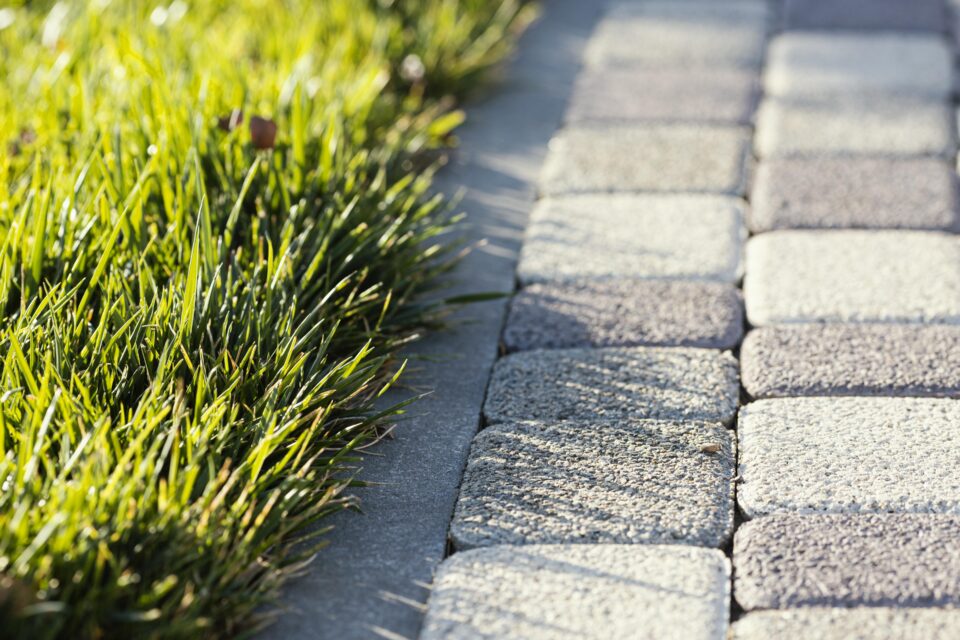The evolving dynamics of the contemporary world have prompted individuals and businesses to make environmentally conscious decisions, one of which has been the widespread adoption of permeable pavers in landscape design. These sophisticated and functional pavers have ushered in a significant shift in the way we utilise and interact with outdoor spaces, fostering beauty, utility and environmental sustainability. This comprehensive guide delves into the world of permeable pavers, exploring their benefits, innovative applications, installation guide, and vital maintenance tips.
Table of Contents
An Emerging Star: Permeable Pavers
Permeable pavers aren’t just another pretty face; they’re a transformative addition to modern landscaping with substantial environmental benefits. Constructed from porous materials such as concrete, recycled plastic, or crushed aggregates, these pavers allow rainwater to seep into the ground, reducing surface runoff and the risk of flooding. Moreover, they come with enhanced flexibility to create varied designs and patterns, allowing homeowners and designers to imbibe a unique aesthetic flavor to their spaces.
The environmental dividends are equally applaudable. Not only do they redirect rainwater back into the local ecosystem, aiding groundwater recharge, but also they curtail urban heat island effect by mitigating heat absorption. Amidst these countless merits, they manage to retain an approachable form, novice-friendly in installation and easy to understand, as we’ll explore in the following sections.
The Winning Factors: Why Choose Permeable Pavers?
Permeable pavers ride high on a host of advantageous attributes that conventional pavers simply don’t offer. Their foremost service is in the realm of water management – acting as a permeable camouflage, these pavers shunt the water back into the earth, preventing ponding, reducing runoff and curbing downstream flooding. Well, that’s not all! They are an easy solution to scorching summer heat, reducing heat islands by offering lower surface temperatures.
Sustainability is another score where these pavers shine. Since they’re mostly made from recycled materials, they help in cutting down waste, promoting a green and sustainable output. With a style to suit every taste – from the crisp and contemporary to the weathered and rustic – permeable pavers assure a perfect blend of functionality and aesthetic appeal.
Innovative Applications of Permeable Pavers in Modern Landscaping
The beautiful amalgam of aesthetics, functionality, and environmental sustainability makes permeable pavers a favourite choice in modern landscaping, be it residential or commercial. Urban design, particularly, is one field where these pavers are leaving a lasting mark. From parkings to public places, permeable pavers are used not just to manage stormwater, reduce heat radiation but also to add a touch of sophistication.
In residential landscaping, permeable driveways, patios, or paths are increasingly popping up. They improve the drainage, thereby ensuring a safe and slip-proof surface in wet weather. Meanwhile, in public spaces like parks or school courtyards, they create a visually appealing area that is easy to maintain and safe to use.
DIY Installations: Your Step-by-Step Guide to Installing Permeable Pavers
Believe it or not, installing permeable pavers isn’t rocket science. With some basic knowledge and a handful of tools, anyone can pull it off. Begin with choosing the type of pavers that suit your aesthetic preferences and functional needs. Next, chalk out a design that aligns with the space available. Once the plan is in place, move onto site preparation, which involves grading the site, adding gravel and bedding sand. The pavers can be then laid out as per the design, filling in the joints with permeable material and tapping them firmly into position.
Caring Tips: Ensuring the longevity of your Permeable Pavers
Just like anything else, permeable pavers need some TLC to keep looking their best. Regular cleaning is a must as it prevents organic debris or silt from blocking the pores. For effective cleaning, a leaf blower or gentle wash with a garden hose can do wonders. Another proactive approach would include periodic inspection and replacement of any broken pavers. Contrarily, if faced with stubborn stains, resort to mild, environmentally friendly detergents.
Expert input and Success Stories
Renowned architect Jane Smith, who recently reimagined a public space in Sydney using permeable pavers, highlights how these pavers offered a “perfect solution to the challenges of stormwater management.” Meanwhile, a Melbourne-based homeowner, John Doe, shares his experience of using permeable pavers in his patio saying, “Not only it has enhanced the visual appeal of my outdoor space, but also helped significantly in reducing surface runoff during rains.”
In Conclusion
Permeable pavers, with their string of advantages – including better water management, reduced heat radiation, aesthetic flexibility and more – truly make a wonderful option for modern landscaping. So, whether you’re reinventing your garden, overhauling your driveway, or partaking in urban design, these pavers assure beauty, sustainability, and functionality in a single, formidable package.
FAQs
What is the cost of permeable pavers?
Cost varies depending on the type of material used and the area to be covered, but generally, they are comparably priced to traditional pavers, making them a cost-effective sustainable solution.
How is the installation process?
The installation process for permeable pavers is similar to traditional ones, with the need for a permeable base and joint filling materials.
What kind of material is best suited for permeable pavers?
Materials such as porous concrete, recycled plastic, or crushed aggregates can be used to construct permeable pavers.
Do permeable pavers impact local ecosystems?
Yes, they help in recharging local water tables, mitigating flood risk, and reducing the heat island effect, thereby imparting a positive impact on local ecosystems.

